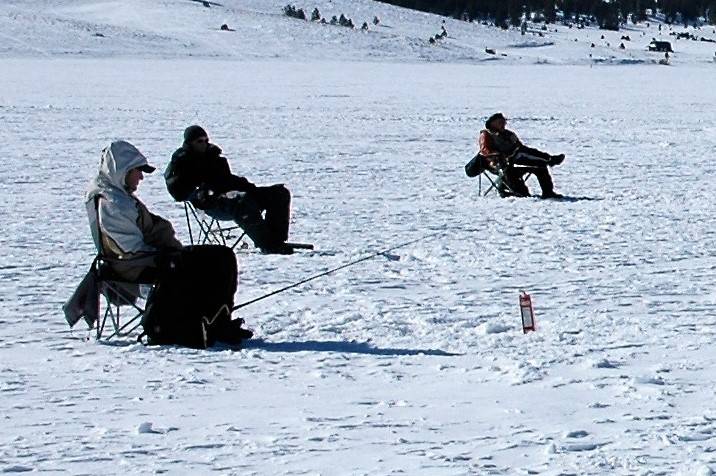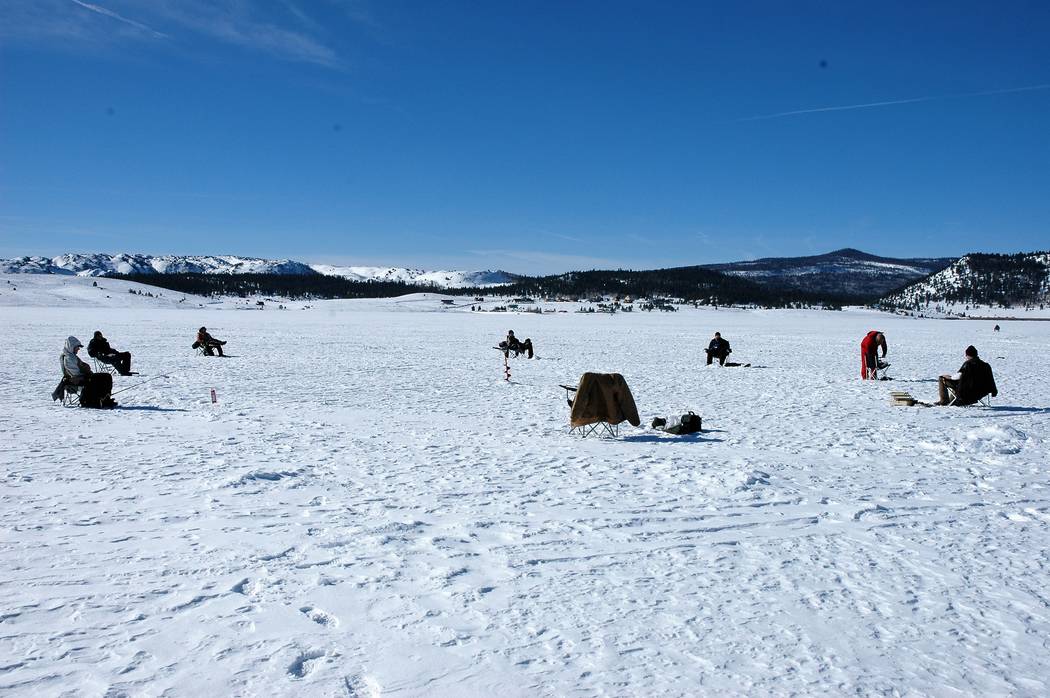Take precautions when venturing onto ice for fishing
Winter officially has arrived, and snow was in the forecast for some western states.
For those who prefer heat and sweat, this might not be good news, but for the rest of us, it means we can look forward to two or three more months of relative comfort. And if winter brings with it temperatures cold enough to cover regional trout waters with ice, we can look forward to some outdoor adventure, especially if the hard water is thick enough to make ice fishing safe.
Keep in mind that when it comes to ice fishing, the term “safe” is a relative term. After all, we are talking about walking onto a sheet of ice covering a body of water and then drilling a hole large enough to pull a fish through it. That thought alone is enough to put the brakes on one’s desire to give ice fishing a try.
The key to a successful ice fishing trip is taking the precautions to ensure you come home. Start by checking ice conditions before leaving and again before venturing onto the ice. Possible information sources include local tackle shops and resorts, coffee shops, park rangers and fishing reports. Even then, be sure to use common sense before stepping onto the ice.
According to the Recreational Boating and Fishing Foundation website, takemefishing.org, you can “Test the thickness yourself using an ice chisel, ice auger or even a cordless quarter-inch drill with a long bit.” Also, be aware of areas where thin ice is a possibility, such as near a stream inlet or an area adjacent to open water. Then keep your distance.
On one outing to Utah’s Panguitch Lake, a favorite destination for anglers from Las Vegas, my friends and I saw a man bury his ATV up to its motor in ice that appeared to be quite solid. We were fishing no more than 30 to 40 yards away through ice that was easily 2 feet thick. That day we learned that ice doesn’t freeze to a uniform depth.
Here are some universally accepted guidelines when pursuing ice-related activities. If the ice is 2 inches thick or less, stay off. Once it reaches 4 inches, it is good for foot traffic and activities such as ice fishing. At 5 inches, the ice will accommodate a snowmobile or an ATV. For those who think they need to drive a car or small pickup on the ice, the standard is 8 to 12 inches. From 12 to 15 inches, the ice will handle a medium pickup.
I prefer ice that is at least 6 inches thick. But regardless of how thick the hard water is, my truck stays on the shore or in a designated parking area. I’ve seen too many news stories about trucks disappearing through the ice while their owners were waiting for fish to bite.
Depth isn’t the only quality a fisherman should use to evaluate ice quality.
“The strongest ice is new, clear ice,” notes the RBFF. “Four inches of clear, newly formed ice may support one person on foot, while a foot or more of old, partially thawed ice may not.”
Something else to look for is a buildup of snow on the ice. Snow has insulating properties that can slow the freezing process, and it can weigh enough to impact how much additional weight the ice can handle.
The bottom line is, ice is never 100 percent safe, but that doesn’t mean you shouldn’t do it. It just means you need to take the precautions necessary.
Never go ice fishing alone and be sure to bring along the means of effecting a rescue if needed, such as throw rope or a length of closet rod. The RBFF recommends wearing a life jacket under your winter gear and carrying a pair of ice picks in case you fall through the ice. The ice picks will help you pull yourself out of the water.
A quick check of the fishing reports for the southern portions of Nevada and Utah and the northern parts of Arizona shows that we are still a week or two from good ice conditions.
Freelance writer Doug Nielsen is a conservation educator for the Nevada Department of Wildlife. His “In the Outdoors” column, published Thursday in the Las Vegas Review-Journal, is not affiliated with or endorsed by the NDOW. Any opinions are his own. Find him on Facebook at @dougwritesoutdoors. He can be reached at intheoutdoorslv@gmail.com.


















